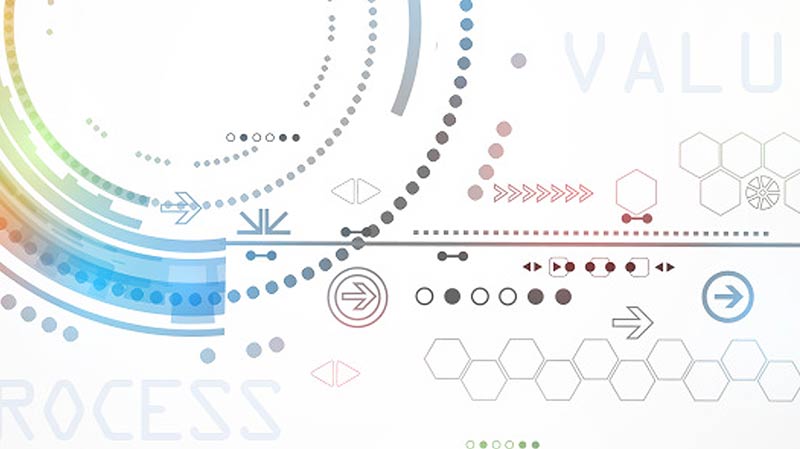Would you buy a car that didn’t run, when your objective was to acquire a mode of transport to get from A to B? No, you wouldn’t. You would have to pay money (Incur Cost) and it wouldn’t help you to get anywhere (No Benefit). So, in other words, it would be of no value to you; the cost would outweigh the benefits. Step into the Enterprise, and ask yourself the same question in another guise. Would you ‘buy’ a business process that costs you more than the benefits it delivers? No, you wouldn’t.
So why then, when one lifts the lid on so many Enterprises, do you find a host of business and IT processes which cost more to operate than the outputs that they produce? The most common answer is the same one that comes when asking the question “Why do you do it like that?” … “Because we have always done it that way”. Whether the process is of value or not never enters the conversation.

My answer to that would be simple – the Enterprise Governance and Management in your organization is probably lacking. Why? Even simpler – if you had appropriate Enterprise Governance and Management in effect, you would have assessed the capability of the process and determined that in its current form it created no value for your organization. Enterprises are a collection of business processes, some designed to deliver product or services and often called core, and others which support this delivery and often called support services – like HR and Finance.
In generations past, information technology (IT) departments and their processes would have fallen under the banner of Support Services. Come the 21st Century, and find me an Enterprise where IT isn’t at the core of the business, an enabler entrenched in all the business process across the organization, and strategically important to it.
It starts to become clear then, that Business and IT processes in an Enterprise are strategically entwined and that the success and longevity of the business is dependent on these. But how do we measure success of an Enterprise? 25 years ago when I was studying accounting, I would have blurted out ‘Profit’ and backed my answer up with a stream of literary references. Today, although still using only one word, I would unequivocally and confidently reply ‘Value’. Sustained Value creation should be the overarching long-term goal of every Enterprise, and in turn its measure of success.
We know from arguably the globes most generally accepted and in use framework for the governance and management of Enterprise IT, COBIT, that value creation is the primary governance objective for an organization. And with the business’s dependency on processes, and therefore IT, we can draw a natural assertion that it is imperative for each process within the Enterprise to not only be creating value for the organization, but to be continuously improving to ensure value is created on a sustainable basis over the life of the business.
To deliver said value, a process must be capable of achieving its process goals and objectives (benefits), doing so as effectively and efficiently as possible whilst optimizing resources and risks (cost). Sounds simple enough, but not all processes are created equal, and not all processes are capable. How then do I determine my IT process capabilities, you may ask, aren’t there so many ways and means out there? Well think about this. Why should you need to consider the many options, when there is a single, integrated framework, that not only provides for the governance and management of your Enterprise IT, but which includes a comprehensive and practical Process Capability Model (PCM). The COBIT 5 PCM is purposefully designed for both process assessment and process improvement, providing the means to measure all of your Enterprise IT Governance and Management processes, and identify opportunities for improvements. PCM provides for six capability levels which a process can achieve. With each level from Level 0 through to Level 5 – Optimising Processes, the value created increases incrementally until it is in a perpetual cycle of continuous improvement to provide for sustainable value creation on an infinite basis.
Sustained Value creation should be the overarching long-term goal of every Enterprise, and in turn its measure of success.
Understanding whether your IT processes contribute to the Enterprise’s long term goal of value creation is essential, and critical to the success of the business. And to ensure value creation, you need to have it as a Governance objective, and have governance and management processes in place which create the required value. This may sound like a challenge, but with COBIT 5, it really isn’t. You don’t need different standards or models… there really is one single, integrated framework which can help you ensure you have Enterprise IT governance and management processes in operation, and that each of these is creating the required value for your business today, tomorrow and every day after that.
COBIT 5, assuring valuable processes for the governance and management of your Enterprise IT. Would you want to be without it? I know I wouldn’t. And perhaps, without realising it, we are already talking about the next big thing, “Valuable Processes”. Or maybe even ‘Value Orientated Architecture’… where governance, management and value come together… with COBIT.
So the next time there’s an opportunity in your organization to examine the processes in place for governance and management of your Enterprise IT, why not put your hand up and ask the question – “Are these processes really as valuable as they could be?”. I have no doubt that the answer that comes back will be “We are not sure, how can we measure that?”, and when it does, take the gap, tell your organization that the first step to process improvement is process assessment, and that you know of just the model for the job - the COBIT 5 Process Capability Model. Now that’s what I would call adding value!




.png)


